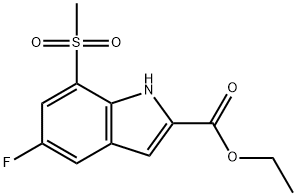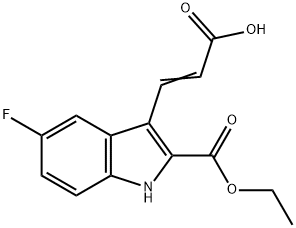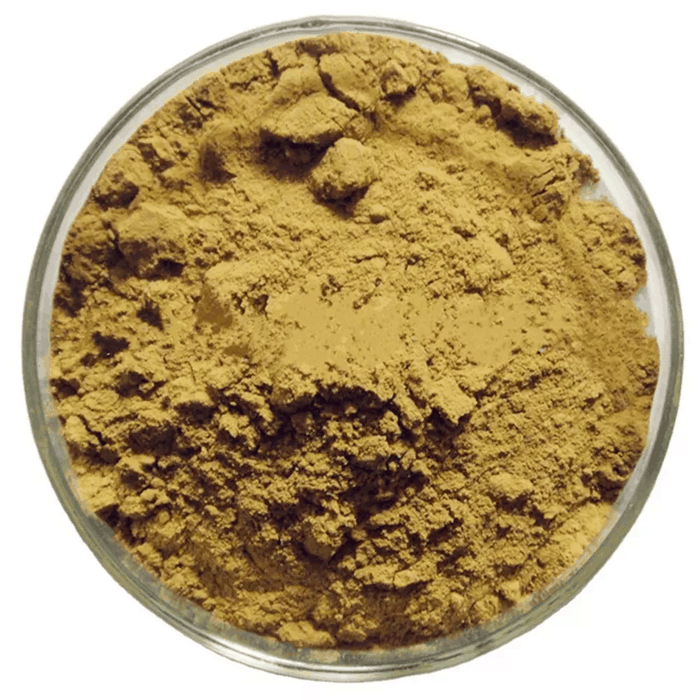ETHYL 5-FLUOROINDOLE-2-CARBOXYLATE
- CAS NO.:348-36-7
- Empirical Formula: C11H10FNO2
- Molecular Weight: 207.2
- MDL number: MFCD00152076
- SAFETY DATA SHEET (SDS)
- Update Date: 2023-04-23 13:52:06

What is ETHYL 5-FLUOROINDOLE-2-CARBOXYLATE?
Chemical properties
light yellow powder
The Uses of ETHYL 5-FLUOROINDOLE-2-CARBOXYLATE
Reactant for preparation of antitumor agents 1 Reactant for preparation of antihyperlipidemic agents 2 Reactant for preparation of factor Xa inhibitors 3 Reactant for preparation of potential antiarrhythmic agents 4 Reactant for preparation of inhibitors of the cytosolic phospholipase A2 5 Reactant for preparation of thromboxane receptor antagonist and thromboxane synthase inhibitor via Mitsunobu reaction 6
The Uses of ETHYL 5-FLUOROINDOLE-2-CARBOXYLATE
- Reactant for preparation of antitumor agents
- Reactant for preparation of antihyperlipidemic agents
- Reactant for preparation of factor Xa inhibitors
- Reactant for preparation of potential antiarrhythmic agents
- Reactant for preparation of inhibitors of the cytosolic phospholipase A2
- Reactant for preparation of thromboxane receptor antagonist and thromboxane synthase inhibitor via Mitsunobu reaction
What are the applications of Application
Ethyl 5-fluoroindole-2-carboxylate is a reactant for preparation of antitumor agents
Properties of ETHYL 5-FLUOROINDOLE-2-CARBOXYLATE
| Melting point: | 146-150 °C |
| Boiling point: | 345.9±22.0 °C(Predicted) |
| Density | 1.291±0.06 g/cm3(Predicted) |
| storage temp. | Inert atmosphere,Room Temperature |
| form | powder to crystal |
| pka | 14.17±0.30(Predicted) |
| color | White to Yellow to Orange |
| λmax | 281nm(EtOH)(lit.) |
| BRN | 170254 |
| CAS DataBase Reference | 348-36-7(CAS DataBase Reference) |
Safety information for ETHYL 5-FLUOROINDOLE-2-CARBOXYLATE
| Signal word | Warning |
| Pictogram(s) |
 Exclamation Mark Irritant GHS07 |
| GHS Hazard Statements |
H315:Skin corrosion/irritation H319:Serious eye damage/eye irritation H335:Specific target organ toxicity, single exposure;Respiratory tract irritation |
| Precautionary Statement Codes |
P261:Avoid breathing dust/fume/gas/mist/vapours/spray. P305+P351+P338:IF IN EYES: Rinse cautiously with water for several minutes. Remove contact lenses, if present and easy to do. Continuerinsing. |
Computed Descriptors for ETHYL 5-FLUOROINDOLE-2-CARBOXYLATE
| InChIKey | VIKOQTQMWBKMNA-UHFFFAOYSA-N |
New Products
Tert-butyl bis(2-chloroethyl)carbamate 4-Methylphenylacetic acid N-Boc-D-alaninol N-BOC-D/L-ALANINOL N-octanoyl benzotriazole 3-Morpholino-1-(4-nitrophenyl)-5,6-dihydropyridin- 2(1H)-one Furan-2,5-Dicarboxylic Acid DIETHYL AMINOMALONATE HYDROCHLORIDE 1,1’-CARBONYLDIIMIDAZOLE R-2-BENZYLOXY PROPIONIC ACID 1,1’-CARBONYLDI (1,2-4 TRIAZOLE) N-METHYL INDAZOLE-3-CARBOXYLIC ACID (2-Hydroxyphenyl)acetonitrile 4-Bromopyrazole 5-BROMO-2CYANO PYRIDINE 5,6-Dimethoxyindanone 5-broMo-2-chloro-N-cyclopentylpyriMidin-4-aMine 2-(Cyanocyclohexyl)acetic acid 4-methoxy-3,5-dinitropyridine 1-(4-(aminomethyl)benzyl)urea hydrochloride 2-aminopropyl benzoate hydrochloride diethyl 2-(2-((tertbutoxycarbonyl)amino) ethyl)malonate tert-butyl 4- (ureidomethyl)benzylcarbamate Ethyl-2-chloro((4-methoxyphenyl)hydrazono)acetateRelated products of tetrahydrofuran








You may like
-
 348-36-7 ETHYL-5-FLUORO INDOLE-2-CARBOXYLATE 98%View Details
348-36-7 ETHYL-5-FLUORO INDOLE-2-CARBOXYLATE 98%View Details
348-36-7 -
 Ethyl 5-Fluoroindole-2-carboxylate CAS 348-36-7View Details
Ethyl 5-Fluoroindole-2-carboxylate CAS 348-36-7View Details
348-36-7 -
 Ethyl 5-fluoroindole-2-carboxylate 98% CAS 348-36-7View Details
Ethyl 5-fluoroindole-2-carboxylate 98% CAS 348-36-7View Details
348-36-7 -
 Ethyl 5-fluoroindole-2-carboxylate CAS 348-36-7View Details
Ethyl 5-fluoroindole-2-carboxylate CAS 348-36-7View Details
348-36-7 -
 1975-50-4 98%View Details
1975-50-4 98%View Details
1975-50-4 -
 14714-50-2 (2-Hydroxyphenyl)acetonitrile 98+View Details
14714-50-2 (2-Hydroxyphenyl)acetonitrile 98+View Details
14714-50-2 -
 118753-70-1 98+View Details
118753-70-1 98+View Details
118753-70-1 -
 733039-20-8 5-broMo-2-chloro-N-cyclopentylpyriMidin-4-aMine 98+View Details
733039-20-8 5-broMo-2-chloro-N-cyclopentylpyriMidin-4-aMine 98+View Details
733039-20-8
Statement: All products displayed on this website are only used for non medical purposes such as industrial applications or scientific research, and cannot be used for clinical diagnosis or treatment of humans or animals. They are not medicinal or edible.